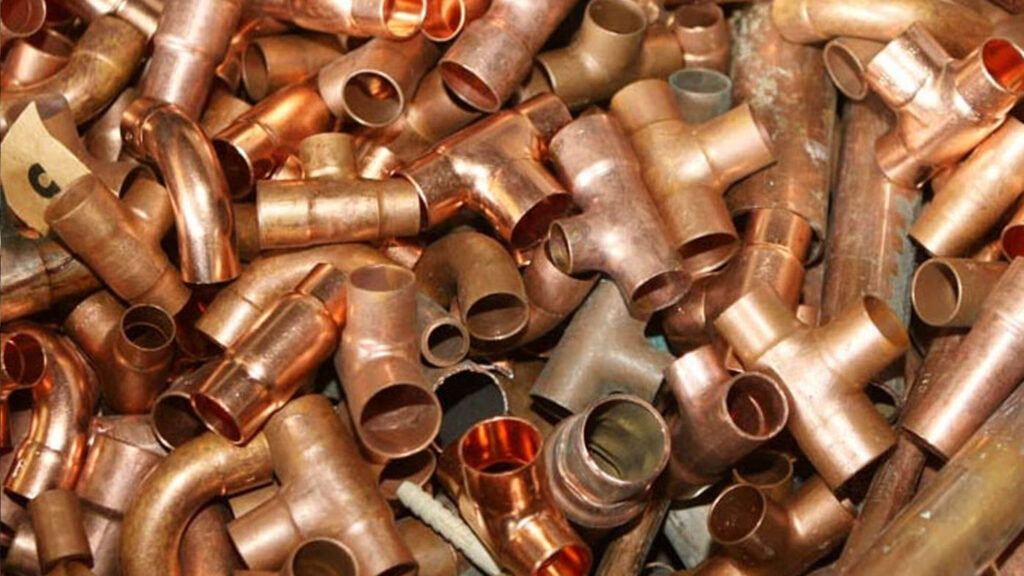Copper Nickel (Cu-Ni) 90/10 scrap is a valuable and widely recycled material in various industries, including marine, chemical, and energy sectors. Composed of 90% copper and 10% nickel, this alloy offers excellent corrosion resistance, particularly in seawater and brine environments. Its scrap form is increasingly sought after due to the high value of both its primary constituents and its utility in environmentally friendly recycling processes.
Composition and Properties
The 90/10 Copper-Nickel alloy consists mainly of copper, with nickel making up the rest, along with trace elements like iron and manganese to enhance its corrosion resistance and strength. The alloy’s key properties include:
- Corrosion resistance: Especially in marine environments, making it ideal for use in shipbuilding, offshore platforms, and desalination plants.
- High strength and durability: Suitable for use in demanding applications, such as heat exchangers, hydraulic lines, and pressure vessels.
- Thermal and electrical conductivity: Its relatively high conductivity makes it useful in heat exchanger tubes and power generation equipment.
- Biofouling resistance: Reduces the accumulation of organisms on marine structures, further improving longevity in saltwater applications.
Sources of Copper Nickel 90/10 Scrap
- Marine Equipment: Since Cu-Ni 90/10 is used extensively in shipbuilding for components like piping, heat exchangers, and condensers, decommissioned ships and maritime equipment provide a significant source of scrap.
- Heat Exchangers: Widely used in industries such as power generation, chemical processing, and oil refineries. Damaged or outdated heat exchangers contribute to the scrap supply.
- Manufacturing Offcuts: Waste from the manufacturing process of new copper-nickel products is a valuable source of scrap, as it can be re-melted and reformed.
- Obsolete Equipment: Industrial equipment containing 90/10 copper-nickel alloys, particularly in desalination plants and petrochemical refineries, provides another source.
Recycling Process
The recycling process for Copper Nickel 90/10 scrap is straightforward and energy-efficient compared to mining and refining new raw materials. Here’s an outline of the general steps involved:
- Collection and Sorting: Scrap is collected from various sources and sorted based on composition. Scrap dealers and industrial recyclers assess its purity and content.
- Melting: The sorted scrap is melted down in a furnace, where impurities are removed. Advanced technologies, such as induction or electric arc furnaces, are used to ensure purity.
- Refining and Alloying: If necessary, the molten scrap is refined further to adjust the proportions of copper, nickel, and other trace elements.
- Casting and Forming: The purified material is cast into ingots or other shapes for re-use in manufacturing.
Economic Value
The market value of Cu-Ni 90/10 scrap is closely tied to the global prices of copper and nickel. Both metals are crucial in various industrial applications, making their demand relatively stable. Given the cost of producing new copper-nickel alloys, recycling scrap offers significant savings in terms of energy, raw material costs, and environmental impact. Additionally, as industries become more focused on sustainability, the demand for high-quality recycled materials continues to grow.
Environmental Impact
Recycling Copper Nickel 90/10 scrap helps to significantly reduce the environmental footprint of copper and nickel production. Mining and refining copper and nickel ores are energy-intensive and produce a substantial amount of greenhouse gases. By reprocessing scrap, the need for raw material extraction is minimized, leading to lower energy consumption, reduced emissions, and conservation of natural resources.
Applications of Recycled Copper Nickel 90/10
Recycled Copper Nickel 90/10 scrap is re-used in several industries, often in the same applications as the original material:
- Marine Engineering: Pipes, heat exchangers, and valves used in seawater environments.
- Desalination Plants: Condensers and heat exchangers for handling high-salinity fluids.
- Chemical Processing: Equipment in chemical plants that need to withstand corrosive environments.
- Energy Production: Heat exchangers and power generation equipment.
Challenges in Recycling
While the recycling process for Cu-Ni 90/10 scrap is efficient, there are some challenges:
- Contamination: Scrap may sometimes be contaminated with other metals, which can affect the purity of the recycled material. Sorting and refining processes must be precise to ensure a high-quality end product.
- Supply Fluctuations: The availability of scrap depends on the lifecycle of industrial equipment and structures, leading to potential fluctuations in supply.
Conclusion
Copper Nickel 90/10 scrap is a highly valuable and versatile material that plays a critical role in the circular economy. Its excellent corrosion resistance and thermal properties make it ideal for demanding applications, particularly in marine and industrial environments. The recycling of this alloy not only conserves natural resources but also reduces the environmental impact of metal production. As industries move toward more sustainable practices, the demand for Copper Nickel 90/10 scrap is expected to grow, further enhancing its importance in global markets.
